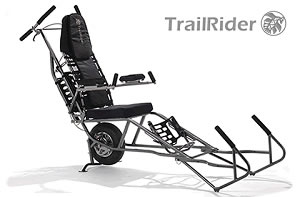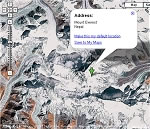|
Introduction
 Mt. Everest is situated in the Himalaya range on the border between Nepal and China. The Tibetan name for the mountain is Chomolungma or Qomolangma ("Mother of the Universe" or "Goddess Mother of the Snows") pronounced as (Jongmalunga). The official Nepali name for the mountain is Sagarmatha, meaning "Head of the Sky". At 8,848 metres above sea level it is the highest mountain on Earth. Every year scores of climbers take their chances trying to climb to the top of the world "because it is there". Mt. Everest is situated in the Himalaya range on the border between Nepal and China. The Tibetan name for the mountain is Chomolungma or Qomolangma ("Mother of the Universe" or "Goddess Mother of the Snows") pronounced as (Jongmalunga). The official Nepali name for the mountain is Sagarmatha, meaning "Head of the Sky". At 8,848 metres above sea level it is the highest mountain on Earth. Every year scores of climbers take their chances trying to climb to the top of the world "because it is there".
In 1959, the first successful climb was made by Edmund Hillary and Sherpa Tenzing Norgay. Ascents of Mt. Everest usually begin with a hike to Base Camp on the south side of the mountain. The hike to Base Camp normally takes between six to eight days and allows climbers to get used to the altitude. At these extreme elevations, altitude sickness or acute mountain sickness is a serious risk but can be avoided by acclimatising slowly.
Trip Itinerary
Our objective is to trek with Pippa to Base Camp using the TrailRider. After arriving in Kathmandu, we will fly to Lukla, the starting point of our expedition. The planned route will take us from Lukla (2,860 m) to Base Camp (5,380 m). Guiding us will be Lhakpa Dorji Sherpa, who operates Khumbu Adventures with his wife, Lhakpa Doma (www.khumbuadventures.com). He has developed a trip itinerary taking into consideration the special needs of our group by spreading a 14 day trek over 21 days to accomodate the slower pace required by the TrailRider.
Click here to view map
Duration: 21 days
Grade: Challenging
Trek type: Lodge (Tea House) Trek
Elevation: 2800m (min); 5550m (max)
Distance Covered: Approximately 8 to 10 kilometers per day
| Day 1 |
Fly to Lukla (2850m) from Kathmandu and trek to Phakding (2650m) |
| Day 2 |
Phakding (2650m) to Monjo (2850m) |
| Day 3 |
Monjo (2850m) to Namche Bazar (3440m) |
| Day 4 |
Rest day in Namche Bazar (3440m) with day trip to view Mt. Everest |
| Day 5 |
Namche Bazar (3440m) to Kengjuma (3750m) |
| Day 6 |
Kengjuma (3750m) to Tengboche (3860m) |
| Day 7 |
Tengboche (3860m) to Pangboche (3900m) |
| Day 8 |
Pangboch (3900m) to Dingboche (4350m) |
| Day 9 |
Rest day in Dingboche (4350m) |
| Day 10 |
Dingboche (4350m) to Dughla (4600m) |
| Day 11 |
Dughla (4600m) to Lobuche (4900m) |
| Day 12 |
Lobuche (4900m) to Gorak Shep (5250m) |
| Day 13 |
Rest day in Gorak Shep (5250m) with day trip to view Mt. Everest at Kala Patar (5545m) |
| Day 14 |
Rest day in Gorak Shep (5250m) with day trip to Everest Base Camp (5300m) |
| Day 15 |
Gorak Shep (5250m) to Dughla (4600m) |
| Day 16 |
Dughla (4600m) to Pangboche (3900m) |
| Day 17 |
Pangboche (3900m) to Tengboche (3850m) |
| Day 18 |
Tengboche (3850m) to Namche Bazar (3450m) |
| Day 19 |
Namche Bazar (3450m) to Phakding (2650m) |
| Day 20 |
Phakding (2650m) to Lukla (2850m) |
| Day 21 |
Fly back to Kathmandu (1350m) from Lukla (2850m) |
Click here to view detailed trip plan
Equipment
The most important piece of equipment for this trip will be the TrailRider available through the British Columbia Mobility Opportunities Society (BCMOS). The TrailRider is designed specifically to allow people living with disabilities to gain access to the wilderness. It has  assisted individuals to climb Mount Kilimanjaro and traverse the West Coast Trail. For our expedition, it will be the main mode of transportation for Pippa to travel to Everest Base Camp. assisted individuals to climb Mount Kilimanjaro and traverse the West Coast Trail. For our expedition, it will be the main mode of transportation for Pippa to travel to Everest Base Camp.
The TrailRider is built using lightweight aluminium and resembles a wheelbarrow with handles at the front and back so it can be pushed and pulled at the same time. A large tire allows it to roll easily over rocky, rough terrain, tree roots and through streams. It also has a hand-operated, lightweight disc brake system located on the rear handles to control its speed. We will be using the Black Diamond Model, which is the lightest, most heavy-duty unit that folds up the smallest; it will meet our needs on the trail and also during air and land travel.
Other Considerations
We are very concerned about keeping Pippa warm during the expedition since MS has affected her circulation. She will be wearing a warm down sleeping bag while riding in the TrailRider that will be waterproofed with a bivy sack. Throughout our trek we will be passing tea houses where boiling water will be available every hour or two, so we will use hot water bottles to add even more warmth. We will also begin the trek as soon as possible in November to take advantage of travelling through the warmest part of the month.
Due to MS, Pippa fatigues easily. We have designed the itinerary to ensure we can have extra rest if need be. We will have to ensure she can have a rest every afternoon by doing the majority of our travelling in the morning when she has the most energy. Pippa is also working with a physiotherapist who has designed a fitness program including cardio and strength training to ensure she is strong for the trip. She is singing in a choir to improve her lung and core strength and participating in classes offered through the MS Society’s Chapter in Victoria such as ball exercises and aquatic exercises.
Pre-trip Preparation
It is going to be important to leave for Nepal at the end of October as prepared as we can be for the trek. This will require practicing this summer as a team moving with Pippa in the TrailRider. We have organized several practice hikes to date and plan to continue with our training until we leave for Nepal, including at least one multi-day hike.
Learn more: http://en.wikipedia.org/wiki/Mount_Everest
Open in: Google Maps

|